- Printing BIG with the JUPITER SE – A Review - May 13, 2024
- Is a Wash & Cure Station Worth It? Creality UW-03 Review - April 29, 2024
- Z Seam | How to Hide & Avoid | Cura & PrusaSlicer - April 20, 2024
Disclosure: Links marked with * are Affiliate Links. I earn from qualifying purchases if you decide to make a purchase through these links – at no additional cost for you!
I have tried using several Hobby 3D Scanners in the past, and I was consistently disappointed. And I thought the CR-Scan Ferret Pro from Creality* would be the same. I was wrong.
The CR-Scan Ferret Pro is surprisingly easy to use and delivers fantastic results. I tried to copy several objects with it (scan and 3D print) and it worked like a charm. Only the smallest details were washed down a bit in the process.
As you will see in this hands-on review, the accuracy is really impressive if you stick to minimum scan size (scanning small miniatures is still not really possible with 3D scanners).
Who should buy the CR-Scan Ferret Pro?
If you are someone who enjoys creating and designing 3D models, the CR-Scan Ferret Pro is definitely worth considering. It’s perfect for hobbyists, makers, and even professionals who need a high-quality and accurate 3D scanner at an affordable price.
The CR-Scan Ferret Pro scans with an accuracy of 0.1 mm. It can be handheld and controlled via PC or smartphone.
Scan Size: 150~2000 mm
Accuracy: 0.1 mm
Pros:
✓ Accurate, detailed scans.
✓ User-friendly and portable.
✓ Scans without special coatings.
✓ Good anti-shake technology.
✓ Multiple operating modes.
Cons:
× Not great for tiny details on objects under the min. scan size (like miniatures).
Table of Contents:
- 1 Specifications
- 2 Packaging and Scope of Delivery of the CR-Scan Ferret Pro
- 3 Setup & Modes of the CR-Scan Ferret Pro
- 4 Creality CR-Scan Ferret Pro: Features
- 5 3D Scanning and Results
- 6 Creality Scan Software
- 7 CR-Scan Ferret Standard vs. Pro
- 8 CR-Scan Ferret Pro vs. Other 3D Scanners
- 9 FAQ – Frequently Asked Questions
- 9.1 What is the difference between CR Ferret and Ferret Pro?
- 9.2 How accurate is the CR-Scan Ferret Pro 3D scanner?
- 9.3 How long does it take to scan an object with the Ferret Pro 3D scanner?
- 9.4 Can you 3D scan miniatures with the CR-Scan Ferret Pro?
- 9.5 Do I need a Smartphone or App for the CR-Scan Ferret Pro?
- 9.6 Can the CR-Scan Ferret Pro be used for outdoor scanning?
- 9.7 What materials can be scanned with the CR-Scan Ferret Pro?
- 9.8 Do I need scanning spray for some materials with the CR-Scan Ferret Pro?
- 10 Conclusion – Is the Ferret Pro Finally a Good Hobby 3D Scanner?
Specifications
- Resolution/Point Distance: 0.16 mm
- Working Distance: 150~700 mm
- Frame Rate/Scan Speed: up to 30 fps
- Scan Size: 150~2000 mm
- Accuracy: 0.1 mm
- Runtime: 2.5 hours
- Battery Capacity: 5000mAh
- Single Capture Range: 560 × 820 mm
- Minimum Scanning: 150 × 150 mm
- Machine Size: 120 × 30 × 26 mm
- Machine Weight: 105 g
- Wireless Connection: WiFi6
- Operating Systems: iOS, Mac, Windows, Android
Packaging and Scope of Delivery of the CR-Scan Ferret Pro

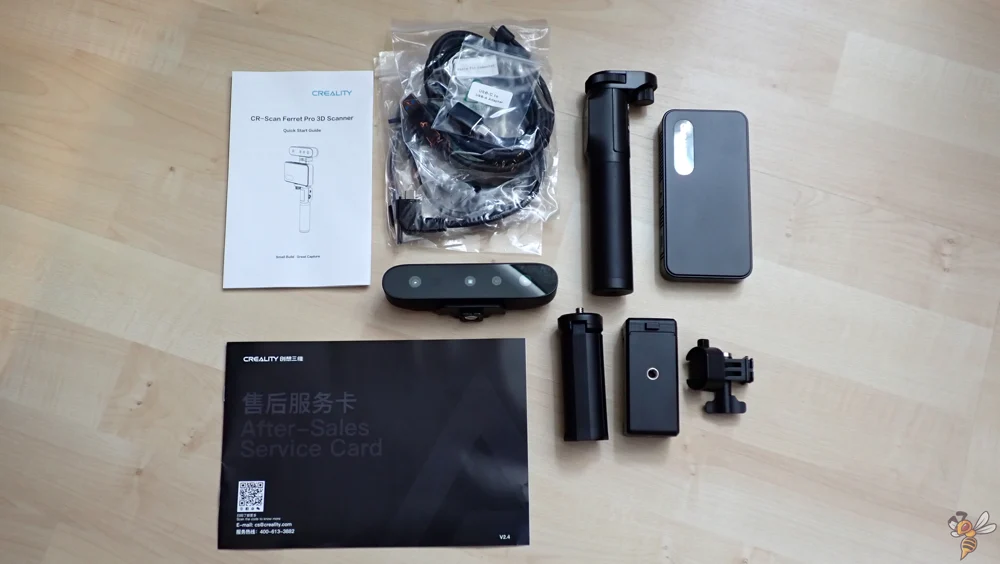
The CR-Scan Ferret Pro arrives fully assembled, eliminating the need for any complicated setup. All you have to do is connect the individual components depending on the operational mode — be it PC Mode, Wi-Fi Mode, or Smartphone Mode (more on that later).
The packaging includes not only the 3D scanner but also an array of essential accessories. The battery module ensures a runtime of 2.5 hours, making for an uninterrupted scanning process. Additionally, a Wi-Fi bridge is included for faster data transfer.
For those who prefer a hands-free operation, a sturdy tripod is provided. A comprehensive Quick Start Guide is available to assist users with the initial operation and setup of the individual modes. All the necessary cables for connection are included, ensuring a ready-to-go experience right out of the box.
When you unpack it, you’ll immediately notice how easy it is to move around this 3D scanner. That’s all thanks to the zippered box it comes in. Not only does this clever packaging design protect the 3D scanner during transport, but it also makes it super portable. The 3D scanner itself is compact and lightweight, and with the zippered box, it’s a breeze to take it wherever you need to go.
Setup & Modes of the CR-Scan Ferret Pro
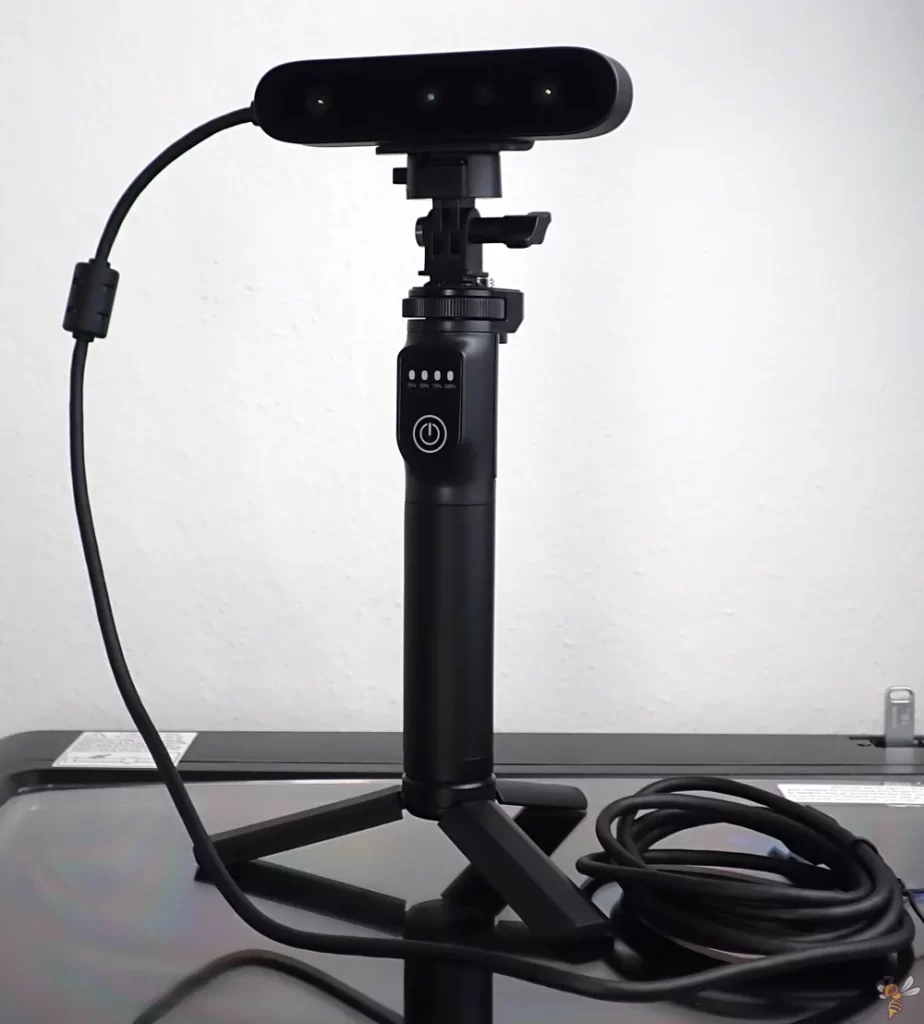
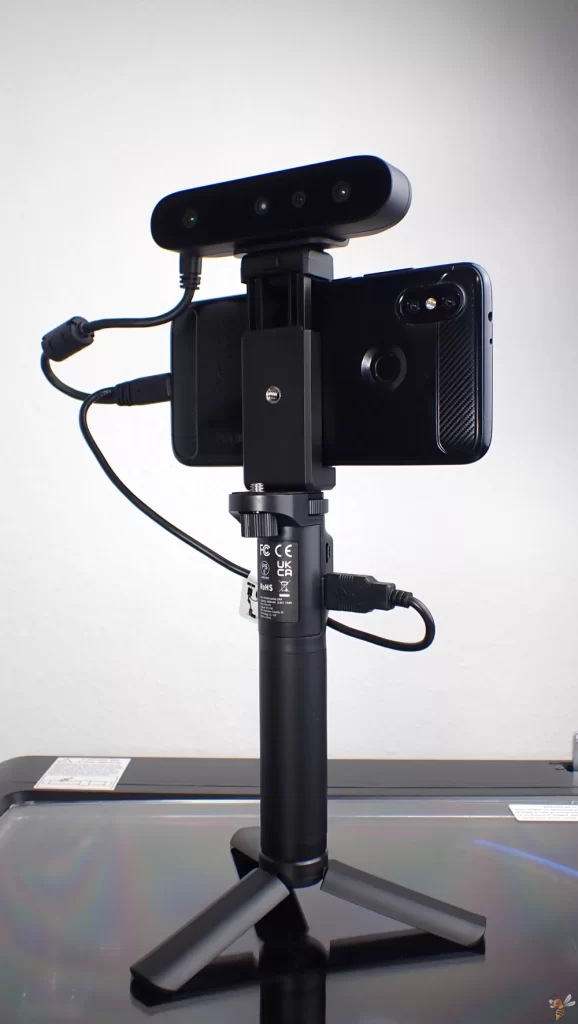
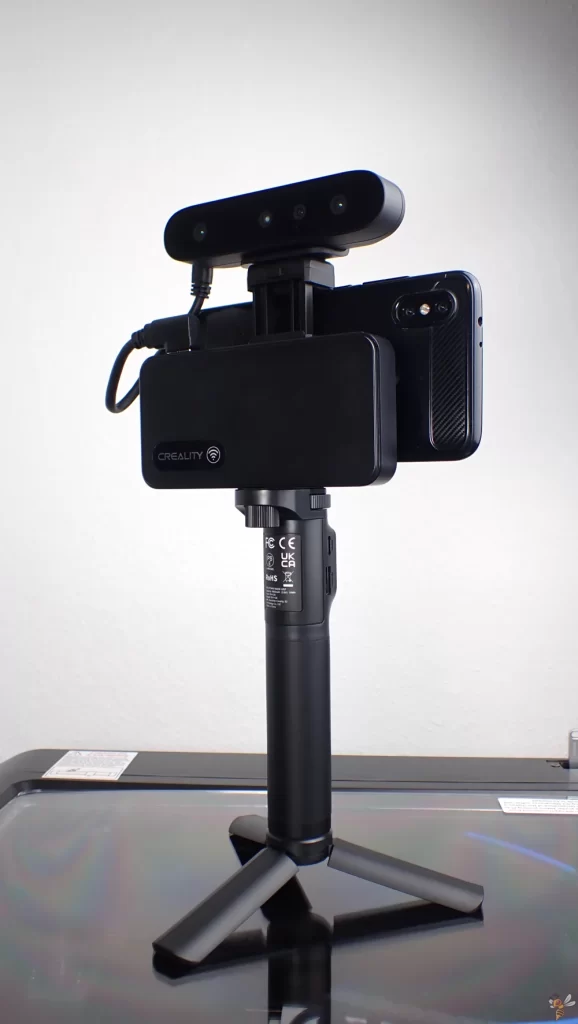
The actual setup consists only of combining the modules according to the mode you want to use. There are 3 modes to choose from:
- PC Mode: Connect the 3D scanner to your computer via USB cable and use the Creality scanner software.
- Wi-Fi Mode: Use the Wi-Fi bridge to connect the 3D scanner wirelessly to your smartphone for remote operation.
- Smartphone Mode: Download the dedicated app and use your smartphone as a controller for the scanner directly on the handle.
There is an interesting sentence in the Quick Start Guide: “For better scanning performance, PC is recommended.”
So if you can connect the 3D scanner directly to your PC, you should do so. This seems to be the high accuracy mode or high-quality mode, and/or gives you more data-transfer-speed. Only if you have to scan something outside the reach of your PC or you don’t have a laptop, then you should use the Wi-Fi or smartphone mode.
Creality CR-Scan Ferret Pro: Features
Anti-shake Tracking
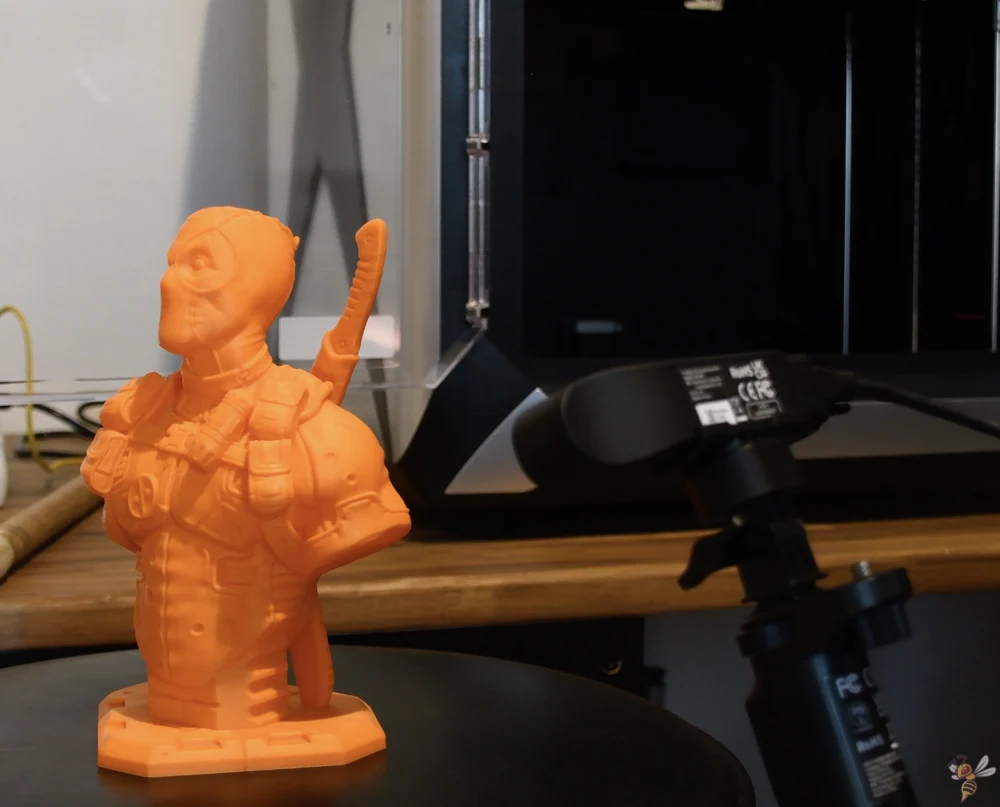
One of the most impressive features of the CR-Scan Ferret Pro is its built-in anti-shake tracking system. This technology ensures that your scans are accurate and precise, even if you hold the scanner in your hands and shake naturally. This makes it ideal for capturing 3D models of objects with intricate details and delicate structures in every environment.
The software of the CR-Scan Ferret Pro is designed to recognize the object in a three-dimensional space and continually track the movements of your hand. Even amidst natural shaking of the hand, the software maintains a steady track of the object, ensuring consistency and precision in capturing the 3D model.
This is what sets the CR-Scan Ferret Pro apart from a lot of other scanners I’ve used, allowing it to deliver highly accurate results regardless of the environment or physical handling.
Scan Black/Metal Objects Without Spraying
Another standout feature of the CR-Scan Ferret Pro is its ability to scan black or metal objects without any need for spraying. This means you can capture 3D models of dark or reflective surfaces without having to alter them in any way.
Many other 3D scanners cannot scan these surfaces without first spraying them with a specific powder or coating. This can be time-consuming and messy, not to mention the added cost of purchasing these specialized materials. With the CR-Scan Ferret Pro, you can skip this step and get straight to scanning.
24-bit Full-Color Scanning

The CR-Scan Ferret Pro also boasts 24-bit full-color scanning capacity, allowing you to capture the true colors of your objects in stunningly detailed and vivid color scans. This is perfect for capturing vibrant and lifelike models of architecture, art pieces, and other colorful objects.
You can change the surface mode before scanning, focusing either on small geometrical surface features or on color patterns on the object. I didn’t find any difference in the quality of results whether I focused on the two modes geometry or full color textures, but it’s good to have the option for more control over your scans.
High-Quality & Fast Scanning (ASIC Chip)
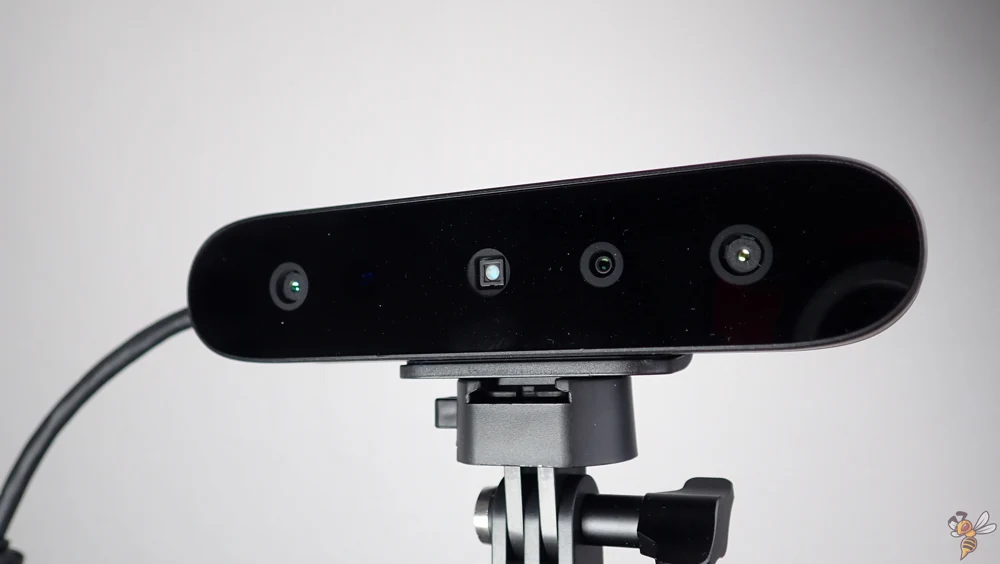
The CR-Scan Ferret Pro utilizes an ASIC (Application-Specific Integrated Circuit) chip to deliver high-quality and fast scanning results. This powerful chip enables high precision tracking of objects while also ensuring a higher scanning efficiency.
Without it, the 3D scanner would not be able to be held in your hand and scan in real-time, as it would require a significant amount of processing power and/or be stationary.
This 3D scanner has an accuracy of 0.1 mm. With it, you can capture even the finest details of your objects with ease. I was really impressed with it, as long as you don’t try to scan small miniatures with fine details.
3D Scanning and Results
I used the CR-Scan Ferret Pro with a direct PC connection together with the Creality Scan software. The software is user-friendly and easy to navigate, making it simple for beginners to use. It also offers advanced features for more experienced users.
I was able to scan objects within seconds using the software. Just connect the 3D scanner, click on “Scan”, set a few settings and the scanning process starts.

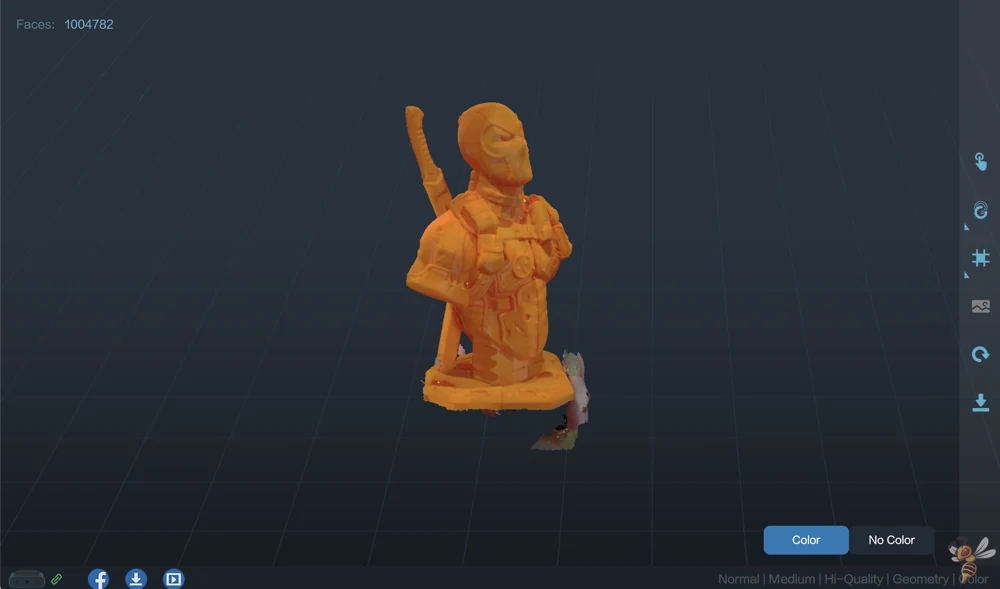
The first thing I tried to scan was a Deadpool bust. The bust is approximately 20 cm in size and has many intricate details. It was the perfect test subject for the CR-Scan Ferret Pro.
I placed the bust on a rotating stool and started the scanning process. In just under 2 minutes, I had a high-quality and accurate scan of the bust. The details were captured beautifully, and I could see every small feature of the bust.

SIZE: 5 cm

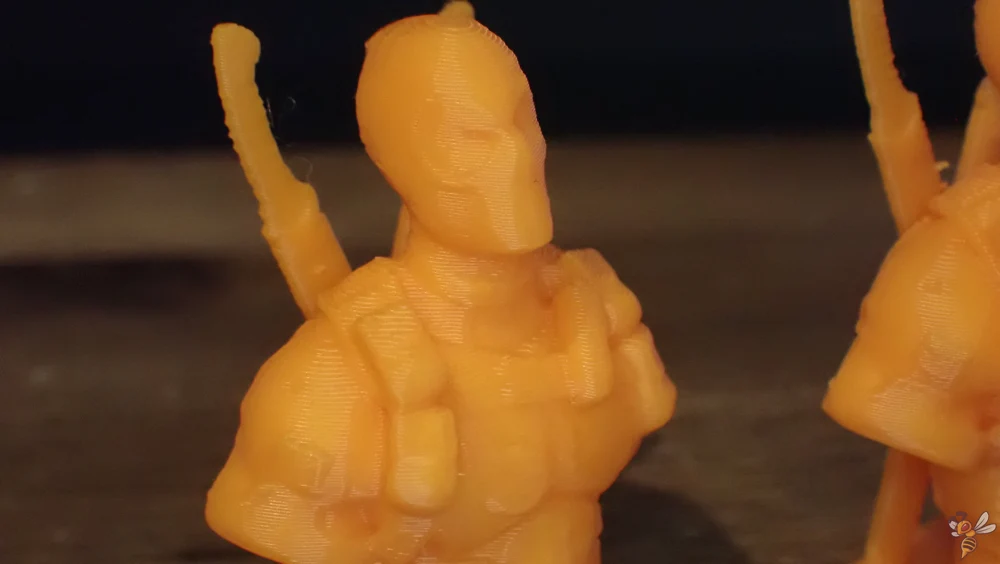
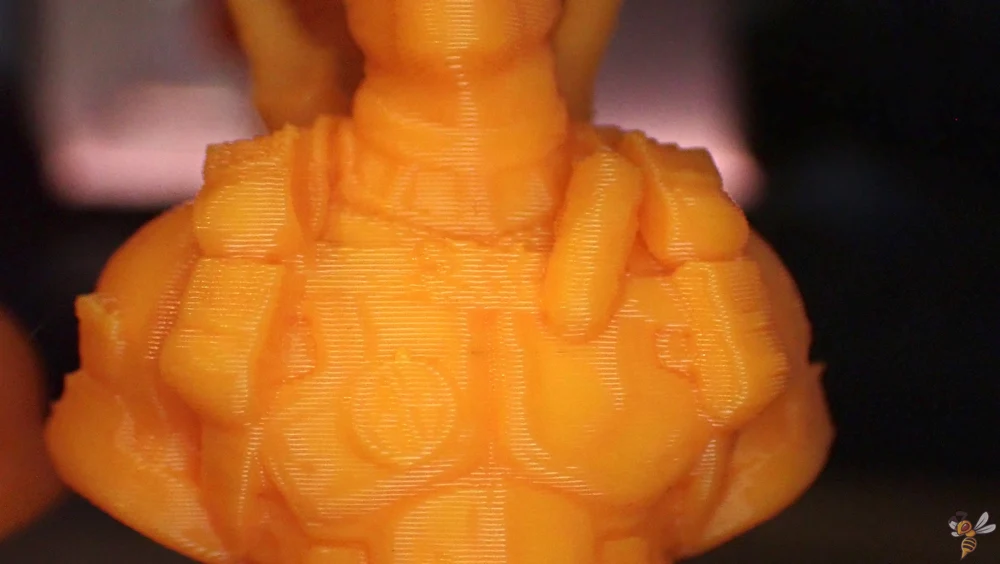
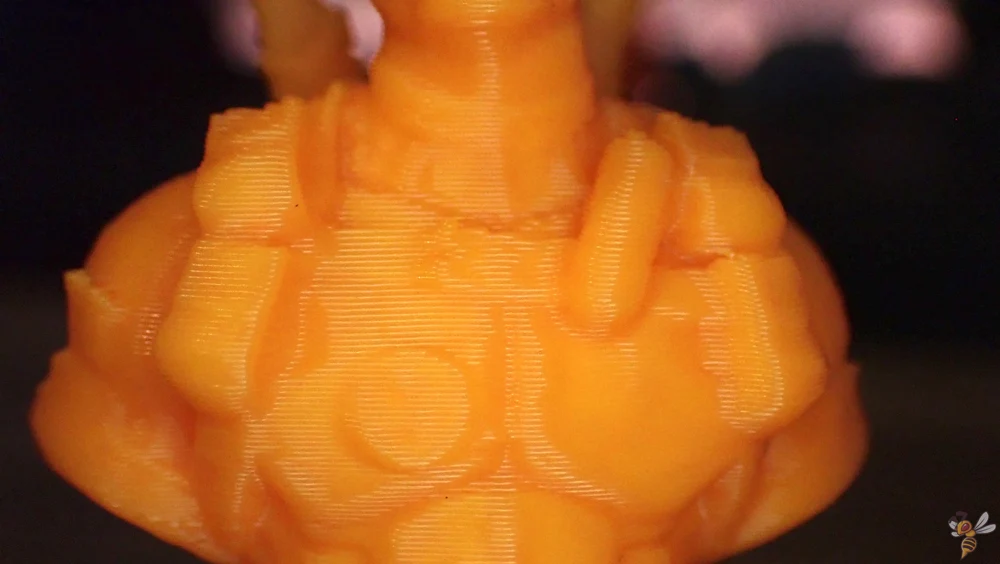
To compare the scan quality, I 3D printed both the original bust and the scan. It was clear that there were slight differences between the two, mainly in the smallest, intricate details. These details appeared somewhat faded in the scanned version.
However, the overall fidelity of the scan remained high, and the minor discrepancies were noticeable only if you knew where to look. From farther away, the printed scan looked almost identical to the original bust.
This showed me that while 3D scanning is not yet a perfect science, it has come a long way and can produce impressive results.

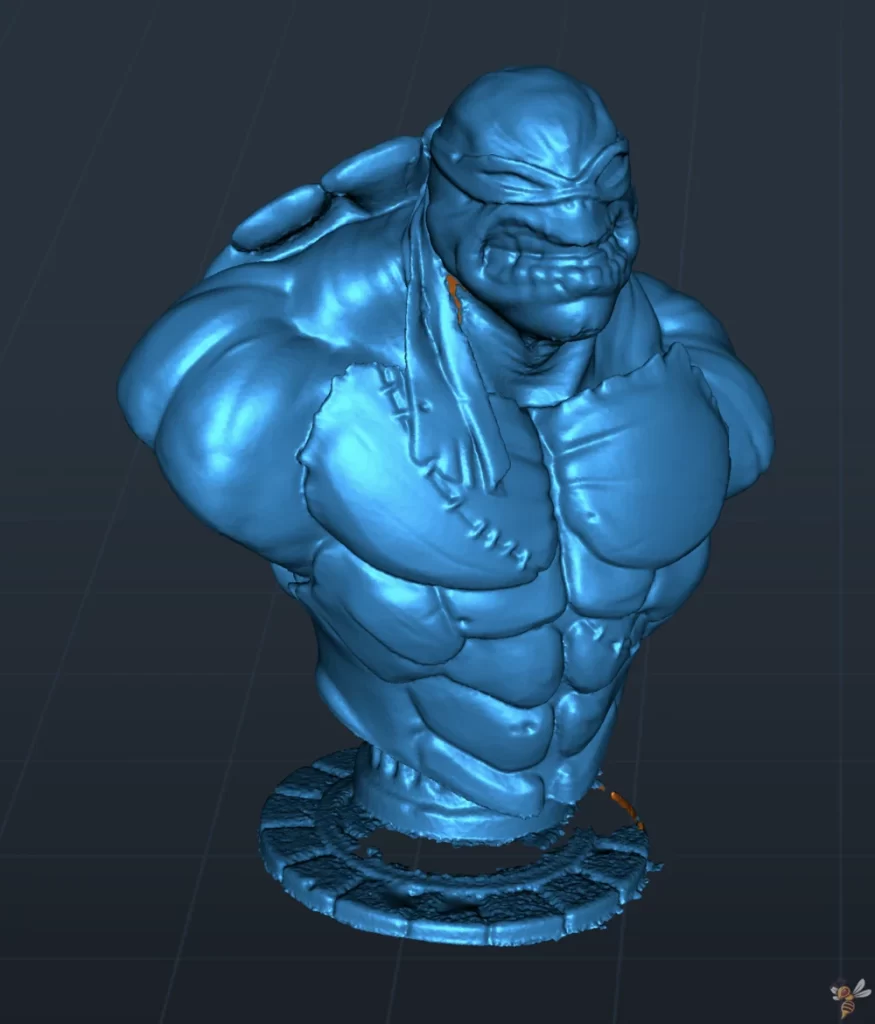
The second object I scanned was a 3D-printed TMNT bust. I also 3D-printed two smaller versions after the scan – the original STL and the scan.

SIZE: 5 cm


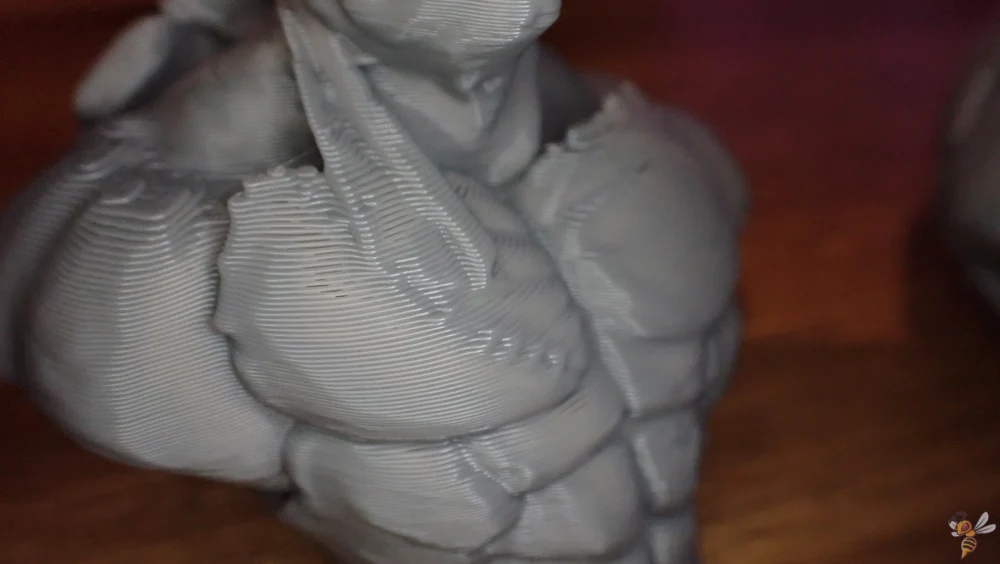
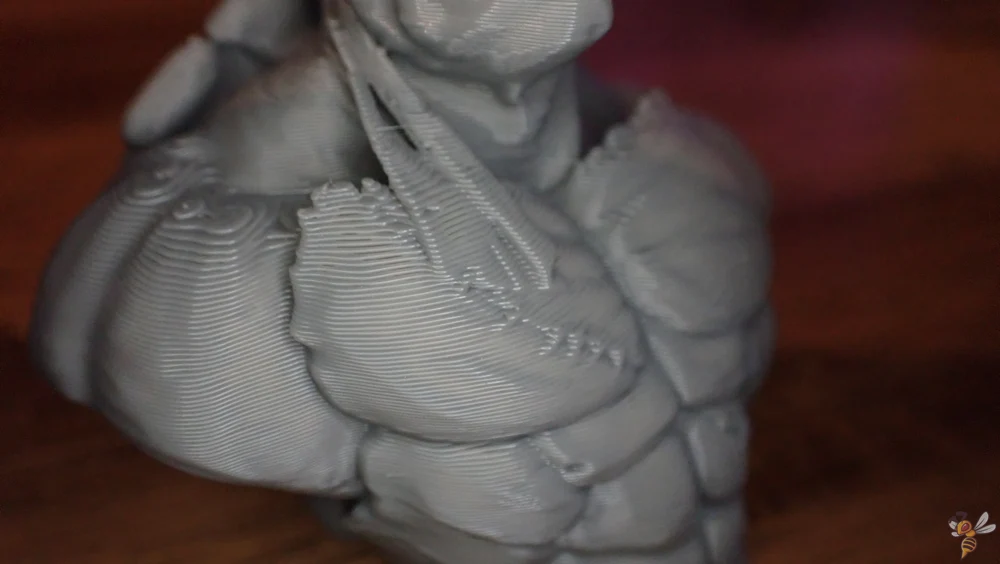
Unsurprisingly, the results of the TMNT bust scan were quite similar to those of the Deadpool scan. When I showed both the original and the scanned version to my wife, she was unable to identify any differences between them.
It was only after I pointed out the specific areas to focus on that she was able to spot the slight discrepancies. Like with the Deadpool bust, the minor differences were in the finer details, which were somewhat smudged in the scanned version. However, these were hardly noticeable unless you knew exactly where to look.
Creality Scan Software
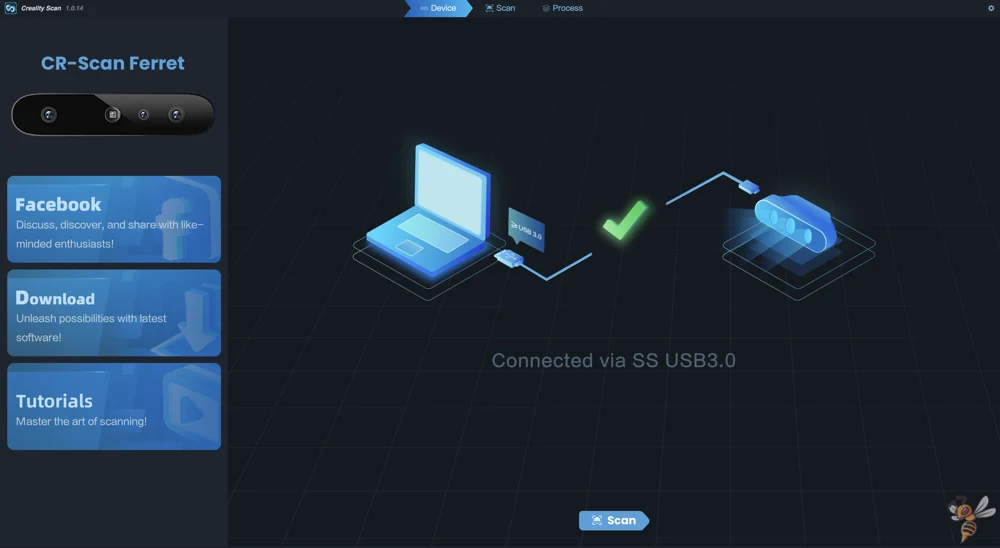
I really like the scan software from Creality. You don’t need complex scanning knowledge or years of experience to get good results. It is very straightforward and user-friendly.
Throughout the scanning process, several features were really impressive. The color texture mapping capability was superb, faithfully recreating the hues and patterns of the original objects. Additionally, the scanning frame rate was remarkably high, capturing a comprehensive picture in a fraction of the time I’ve experienced with other 3D scanners. The success rate of the scans was also noteworthy, with each attempt producing usable results.
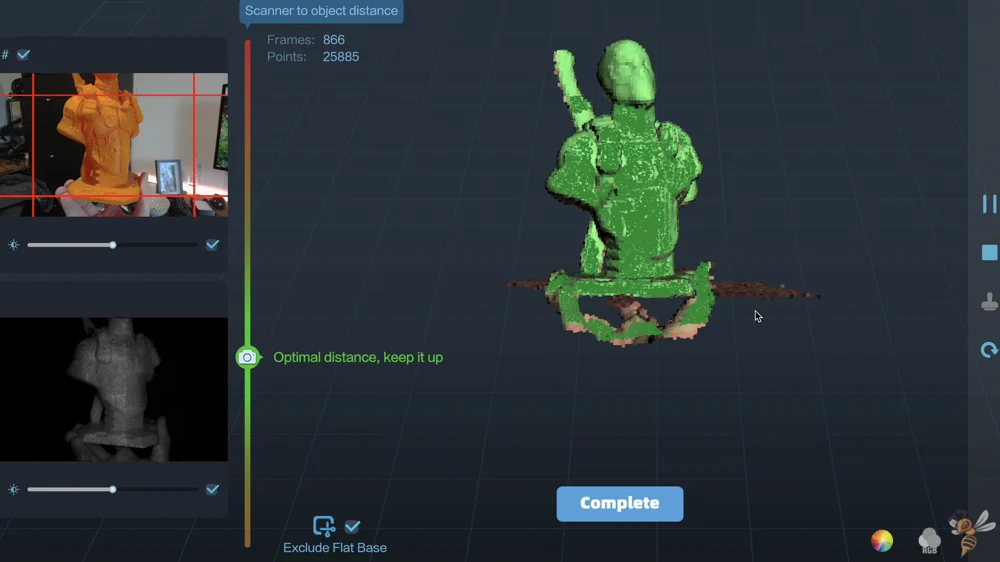
After you start scanning, you can see how many points the scan has accumulated and it shows you which areas are scanned well enough (green) and which need to be scanned a few more times from different angles (red). This ensures that the resulting scan does not have holes and every intricate detail is captured.
The anti-shake tracking feature ensured the high precision scanning, even when handling the 3D scanner was less than steady. Finally, the built-in working distance added an extra layer of convenience, making the scanning process smooth and hassle-free. The Creality Scan Software tells you, with a colored bar, if you are too near or too far from the object.
The built-in camera shows you real-time footage and some kind of UV mode on the left side of the UI. With these two images in the software, you can easily keep the object in frame.
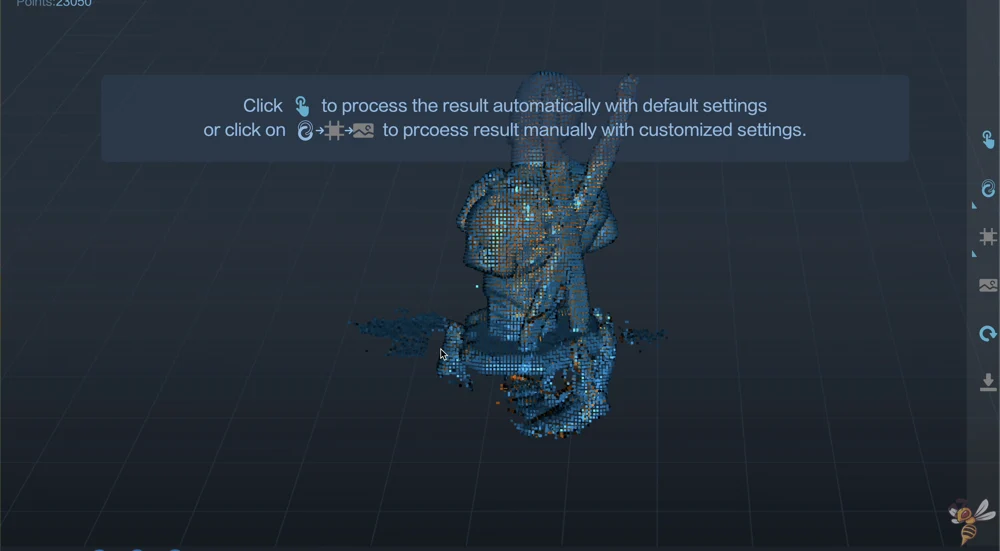
Once the scanning process is completed, the Creality Scan software offers a straightforward model optimization feature. With the one click model optimization, you can refine your 3D model, smoothing out any imperfections and improving the overall quality of the scan.
CR-Scan Ferret Standard vs. Pro
I only tested the Pro version, but after studying the specifications of the standard version*, I can give you a brief comparison to help you understand the specific enhancements you’ll get if you decide to upgrade to the Pro model:
- Enhanced Connectivity and Efficiency: Both 3D scanners are fast, but the CR-Scan Ferret Pro comes equipped with WiFi6 technology. This advanced connectivity ensures faster and more reliable data transfer, making the process of collecting and syncing your scans significantly more efficient, especially in environments with multiple connected devices.
- Simplified Operation: The Pro model boasts a one-click functionality feature. This refinement is designed for ease of use, allowing users to initiate scans quickly, which is particularly beneficial for those who require frequent, hassle-free scanning throughout their workflow.
- Extended Runtime: With the Pro, users benefit from an increased battery life, offering a runtime of 2.5 hours. This extended duration is ideal for professionals engaged in lengthy scanning sessions or fieldwork, eliminating the need for frequent recharges.
- Advanced Scanning Stability: The CR-Scan Ferret Pro is integrated with an anti-shake tracking feature. This technology is pivotal in maintaining scan accuracy, ensuring the success rate of your scans is substantially higher compared to the standard model, particularly in motion-intensive environments.
- Superior Scanning Detail: One of the standout features of the Pro model is its sophisticated face mapping algorithm. This enhancement optimizes the camera to capture and produce more detailed and accurate scans, a function especially useful for applications requiring high-fidelity facial recognition or intricate detail capture.
In summary, while both models perform robustly in fast scanning, the CR-Scan Ferret Pro is tailored for professionals looking for more efficient, detailed, and reliable scanning experiences. Its advanced features justify the investment, especially for users aiming to leverage improved connectivity, convenience, and detailed capture in their scanning tasks.
CR-Scan Ferret Pro vs. Other 3D Scanners

Compared to other 3D scanners on the market, the CR-Scan Ferret Pro stands out with its anti-shake tracking feature, high accuracy and portability.
With its sleek design and compact size, the CR-Scan Ferret Pro is highly portable, allowing you to easily take it with you to different locations for scanning tasks. This eliminates the need for a static setup with a turntable. You can simply hold the Ferret scanner in your hand, moving it around the object to capture every angle in detail.
This way, you can even scan statues or other immovable objects, as the scanner’s handheld feature allows you to move around the object instead of moving the object itself. This feature is particularly beneficial for artists and designers who need to scan large or delicate objects without risking any damage during transportation.
While phone apps might be cheaper at first, they don’t always do everything that a real 3D scanner can. Having the CR-Scan Ferret Pro means you’re ready for bigger scanning jobs with a tool made just for that.
Here are other 3D Scanners to compare the Ferret Pro to:
FAQ – Frequently Asked Questions
What is the difference between CR Ferret and Ferret Pro?
The CR-Scan Ferret Pro distinguishes itself from the standard model with WiFi6 for quicker data handling, one-click scanning for user ease, a longer 2.5-hour battery life, and superior scan stability and detail via anti-shake technology and an advanced face mapping algorithm. These enhancements streamline the scanning process.
Compared to Ferret, Ferret Pro offers a wireless connection. While Ferret works with some Android phones using a cable, Ferret Pro can connect wirelessly to iPhones and more Android devices. This makes scanning large objects like the human body and outdoor scanning easier.
How accurate is the CR-Scan Ferret Pro 3D scanner?
The Ferret Pro has an accuracy of up to 0.1 mm, making it suitable for professional use in industries such as architecture, engineering, and design. It can capture small details on medium- to large-scale objects.
How long does it take to scan an object with the Ferret Pro 3D scanner?
With its one-click scanning feature and advanced face mapping algorithm, the Ferret Pro 3D scanner can capture high-quality scans in just minutes. The exact time may vary depending on the complexity and size of the object being scanned.
Can you 3D scan miniatures with the CR-Scan Ferret Pro?
While the CR-Scan Ferret Pro is proficient in capturing larger objects with intricate details, it may not be ideally suited for scanning miniatures. Small details on these tiny models may not be accurately captured and may appear washed out or smoothed over in the resulting scan.
Until now, even the best hobby 3D scanners cannot capture tiny features like the eyes or the nose of a war-gaming miniature or something similar in size.
Do I need a Smartphone or App for the CR-Scan Ferret Pro?
No, the use of a smartphone is not mandatory for the operation of the CR-Scan Ferret Pro. It offers three modes: Smartphone Mode, Wifi + PC Mode, and PC + Cable Mode.
Smartphone Mode utilizes a mobile app to control and interact with the scanner. In contrast, Wifi + PC Mode allows wireless operation with a computer, while PC + Cable Mode caters to users preferring a wired connection for stability.
Can the CR-Scan Ferret Pro be used for outdoor scanning?
Yes, the Ferret Pro can be used both for indoor and outdoor scanning projects as long as there is sufficient lighting in the environment. Its advanced bright sunlight tracking mode allows for high-quality scans even in direct sunlight. Additionally, the Ferret Pro is lightweight and portable, making it easy to carry around.
What materials can be scanned with the CR-Scan Ferret Pro?
The Ferret Pro can scan a wide range of materials including plastic, metal, wood, and more.
Do I need scanning spray for some materials with the CR-Scan Ferret Pro?
No, using the CR-Scan Ferret Pro does not necessitate the use of a scanning spray even for materials that are traditionally challenging for 3D scanners. This includes shiny and black objects which are notoriously difficult to scan due to their light-reflecting properties.
Conclusion – Is the Ferret Pro Finally a Good Hobby 3D Scanner?
What I really liked about the Ferret Pro:
✓ High accuracy and detail in scans.
✓ Portability and ease of use.
✓ No need for special coatings, even for reflective surfaces.
✓ Impressive anti-shake technology.
✓ Versatile with different operating modes.
Potential for improvement:
× Not great for tiny details on objects under the minimum scan size (like miniatures).
The CR-Scan Ferret Pro* breaks the mold among hobby 3D scanners. Its ease of use, coupled with high accuracy and the ability to scan without needing special preparations or stationary setups, makes it a valuable tool for hobbyists and professionals alike.
While it struggles with tiny, intricate details (as every 3D scanner), it excels in overall fidelity, making it a reliable option for various 3D scanning needs. It’s significantly better than anything I used so far!
The CR-Scan Ferret Pro scans with an accuracy of 0.1 mm. It can be handheld and controlled via PC or smartphone.
Scan Size: 150~2000 mm
Accuracy: 0.1 mm
Pros:
✓ Accurate, detailed scans.
✓ User-friendly and portable.
✓ Scans without special coatings.
✓ Good anti-shake technology.
✓ Multiple operating modes.
Cons:
× Not great for tiny details on objects under the min. scan size (like miniatures).
Disclosure: This website is the property of Martin Lütkemeyer and is operated by Martin Lütkemeyer. Martin Lütkemeyer is a member of the Amazon Services LLC and other Affiliate Programs. These are affiliate advertising programs designed to enable websites to earn advertising revenue through advertising and linking to Amazon.com and others. Links marked with * are affiliate links.


